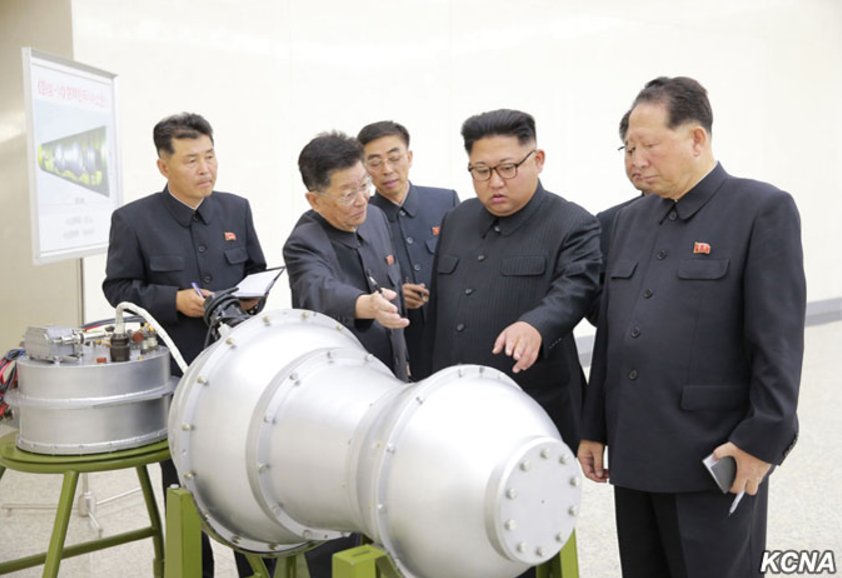North Korea Nuclear Bomb
On September 3rd, Pyongyang, the capital of North Korea, launched a nuclear test of a recently engineered hydrogen bomb without warning. According to NPR, the bomb’s earth tremors were picked up by seismic stations all over the world.
The seismic stations showed signatures from the bomb that, according to BBC was, “off the charts,” meaning that the source of this earthly interruption was no earthquake, and no ordinary nuclear bomb. BBC tells us that “H-bombs, also known as thermonuclear warheads, are massively more powerful than atomic bombs, using fusion – the merging of atoms – rather than fission to unleash enormous amounts of energy”.
North Korea has now run a total of six nuclear tests. They are commonly conducted underground, or “fly-balled” into space, yet the world is concerned that they may consider testing a ballistic-missile above ground within Earth’s atmosphere. This would produce a mushroom cloud and radioactive fallout. The United Nations has become adamant in their hesitance to testing nuclear weapons, and therefore North Korea’s sudden decision to test this new hydrogen bomb device underground has caused a political uproar.
The day before the testing of the bomb, North Korea released photos of Kim-Jong-Un standing in front of this missile warhead with a proud face.
North Korea has repetitively found itself in a situation of disagreement with its surrounding countries over the topic of nuclear weapon testing. The United States launched its last and highly controversial ballistic-missile test on May 6, 1962. According to NPR they shot a “nuclear-tipped missile, out of the waters of the Pacific Ocean.” It was America’s first and only test of a nuclear missile. Loading a powerful bomb on a nuclear warhead to be shot at a target is a dangerous test, one that the United States agreed to no longer conduct.
South Korea would like the United Nations to deal with this situation. Through intense security sanctioning, they wish to completely isolate the country. Japan’s Chief Cabinet Secretary, Yoshihide Suga, said sanctions against North Korea should include restrictions on the trade of oil products. In addition, China, an ally of North Korea, was embarrassed by the testing of this hydrogen bomb, and condemned Kim-Jong-Un’s decision to test it. These reactions come as a result of the lack of support North Korea has received by its neighboring countries.
Despite recent threats from the Trump administration, Pyongyang will not halt their testing activities. All fronts pressuring North Korea to stop their nuclear testing have failed, with countries attempting isolation, sanctioning, and military threat. Containment and deterrence will now be used as strategies to live with the nuclear-armed North Korea, rather than rolling back their nuclear usage.
Brumfiel, Geoff. “Here Are The Facts About North Korea’s Nuclear Test.” NPR, NPR, 3 Sept. 2017, www.npr.org/sections/thetwo-way/2017/09/03/548262043/here-are-the-facts-about-north-koreas-nuclear-test.
“North Korea Nuclear Tests: What Did They Achieve?” BBC News, BBC, 3 Sept. 2017, www.bbc.com/news/world-asia-17823706.
“North Korea Nuclear Test: Hydrogen Bomb ‘Missile-Ready’.” BBC News, BBC, 3 Sept. 2017, www.bbc.com/news/world-asia-41139445.
Brumfiel, Geoff. “How North Korea’s Nuclear Tests Could Get Even More Terrifying.” NPR, NPR, 6 Sept. 2017, www.npr.org/sections/parallels/2017/09/06/548755431/how-north-koreas-nuclear-tests-could-get-even-more-terrifying.













